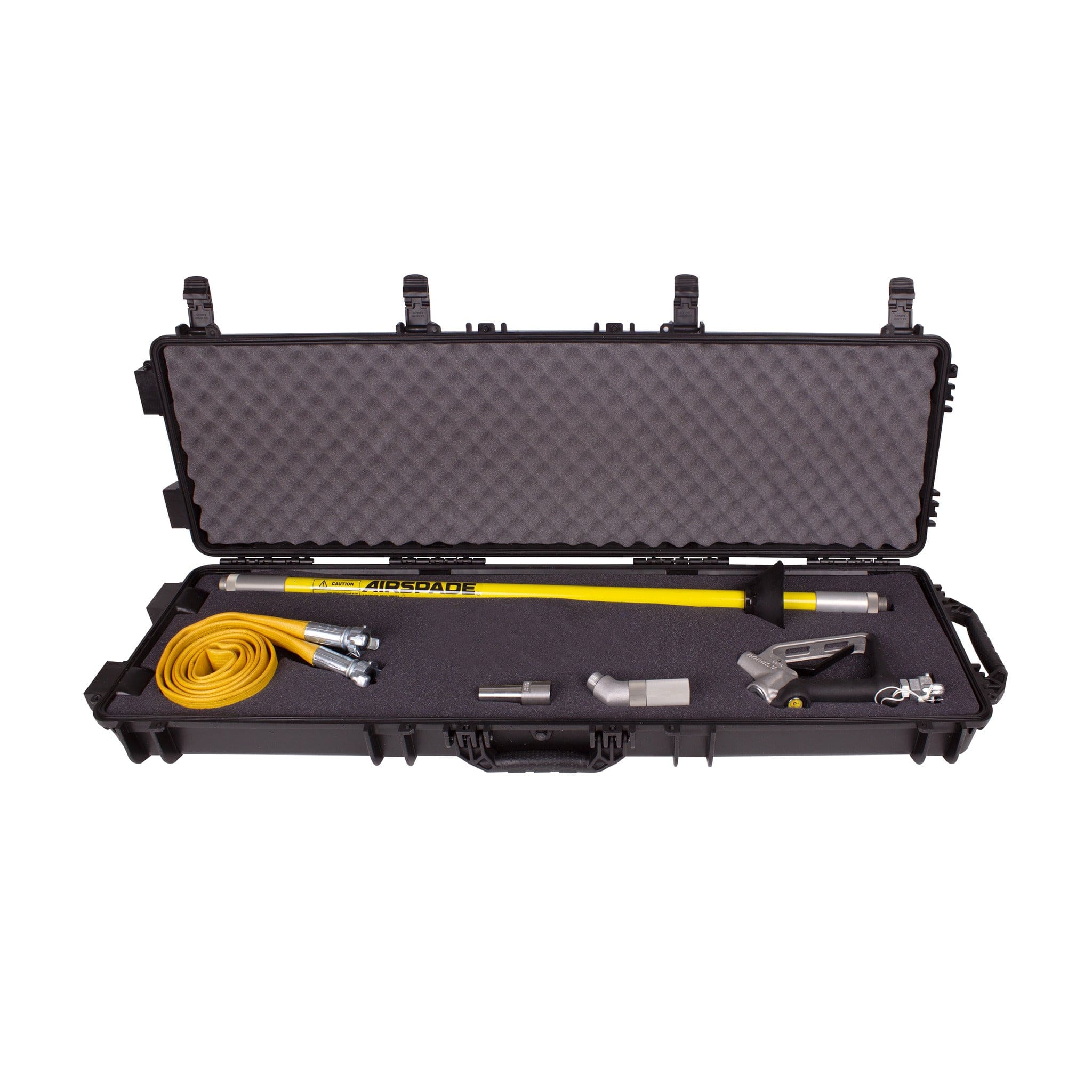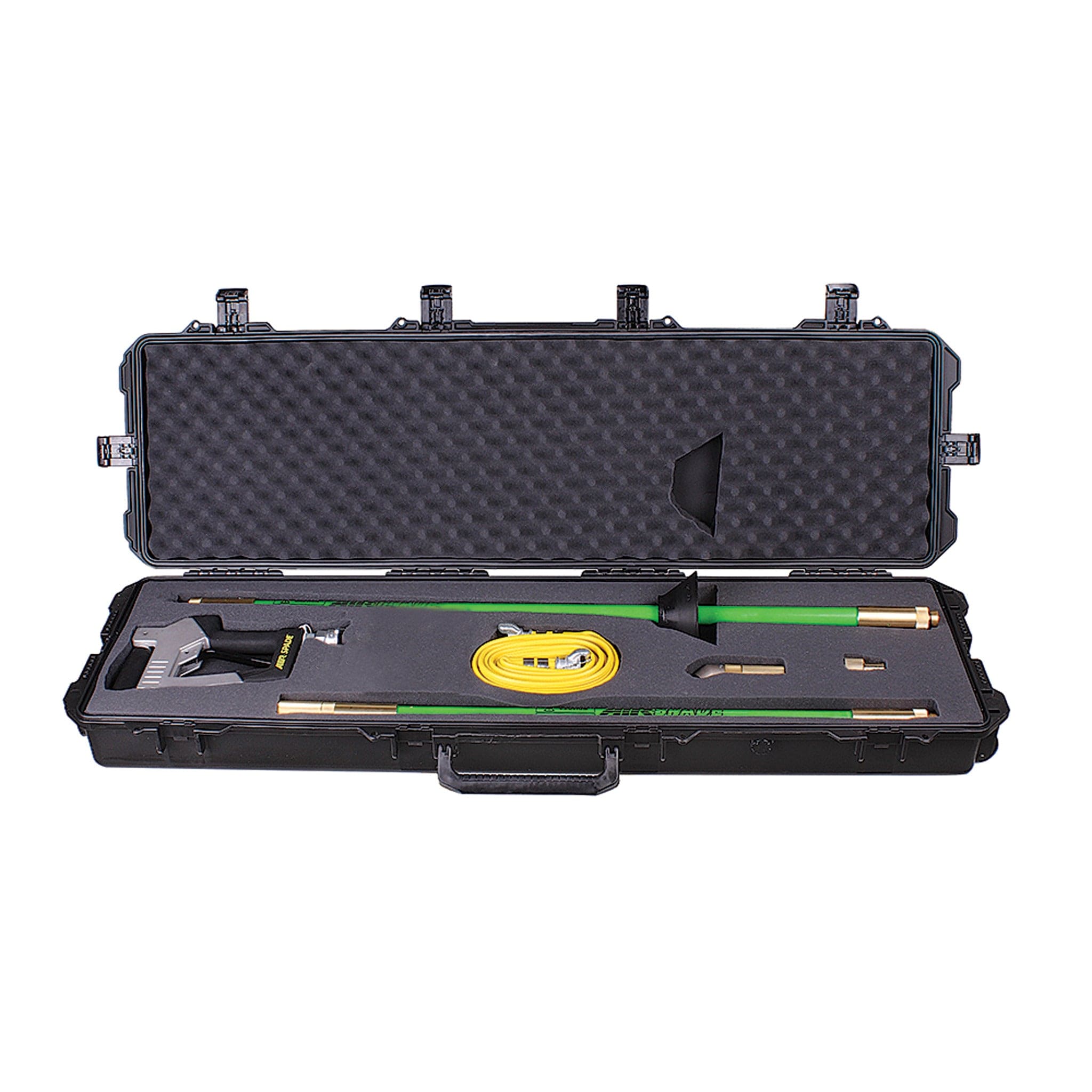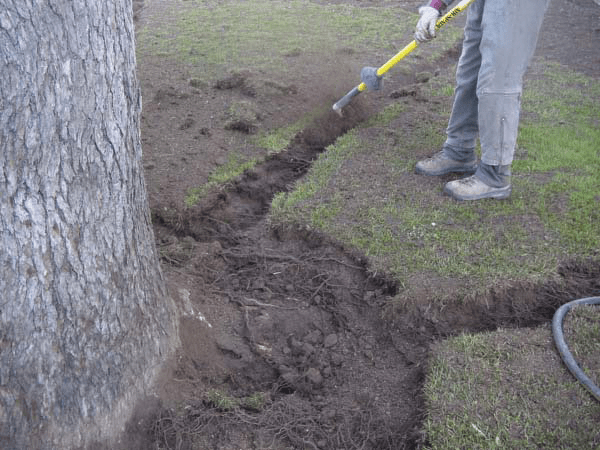Digging with AirSpade
Featuring the patented, supersonic nozzle, AirSpade is effective in virtually all soils and even hard clays. Under nominal conditions, AirSpade will dig a trench up to several inches deep per pass, in medium to stiff soil.
In general, AirSpade will not cut through rock. However, shale may be broken apart by the AirSpade if the air-jet is directed between the laminations of the rock. Typically, AirSpade will not dislodge hard, frozen soils which tend to behave like pavement or concrete.
Watering the work area ahead of time can sometimes be helpful. Water reduces soil strength thus making digging easier. Water also reduces airborne dust if the soil is extremely dry. Combining the use of the AirSpade with a low-pressure water source (garden hose) can aid the excavation of highly compacted or sun-baked soils.
POPULAR PRODUCTS
LEARN MORE ABOUT AIRSPADE
Compressed Air Requirements
All AirSpade nozzles are designed to operate optimally at 90 psi...
AirSpade Supersonic Nozzle
Supersonic nozzle turns compressed air into a high-speed, laser-like jet...
Soil Characteristics
Although hundreds of different types of soils exist...
Benefits of Air Excavation
Air excavation has become a preferred method for digging on many jobs...
Excavation Rates
Excavation rates for AirSpade are a function of soil type and nozzle size (air flow). Hard, stiff soils will have lower excavation rates than soft, sandy soils. For any given soil, the lower the unconfined compressive strength, the faster the digging. Refer to Soil Characteristics for more details.
As shown in the table below, six standard AirSpade supersonic nozzles, ranging in size from 25 cfm to 330 cfm, are available. As a rule of thumb, the quantity of soil that can be excavated in a given amount of time is roughly proportional to air consumption.
AirSpade
Typical Excavation Rates (cu ft/min)
Model
Nozzle Size (cfm)
OSHA Cohesive Soil
Type A
OSHA Cohesive Soil
Type C

2000
25
60
105
150
225
0.4
0.7
0.9
1.2
1.7
0.9
1.1
1.5
1.8
2.3

3000
330
2.4
3.0



